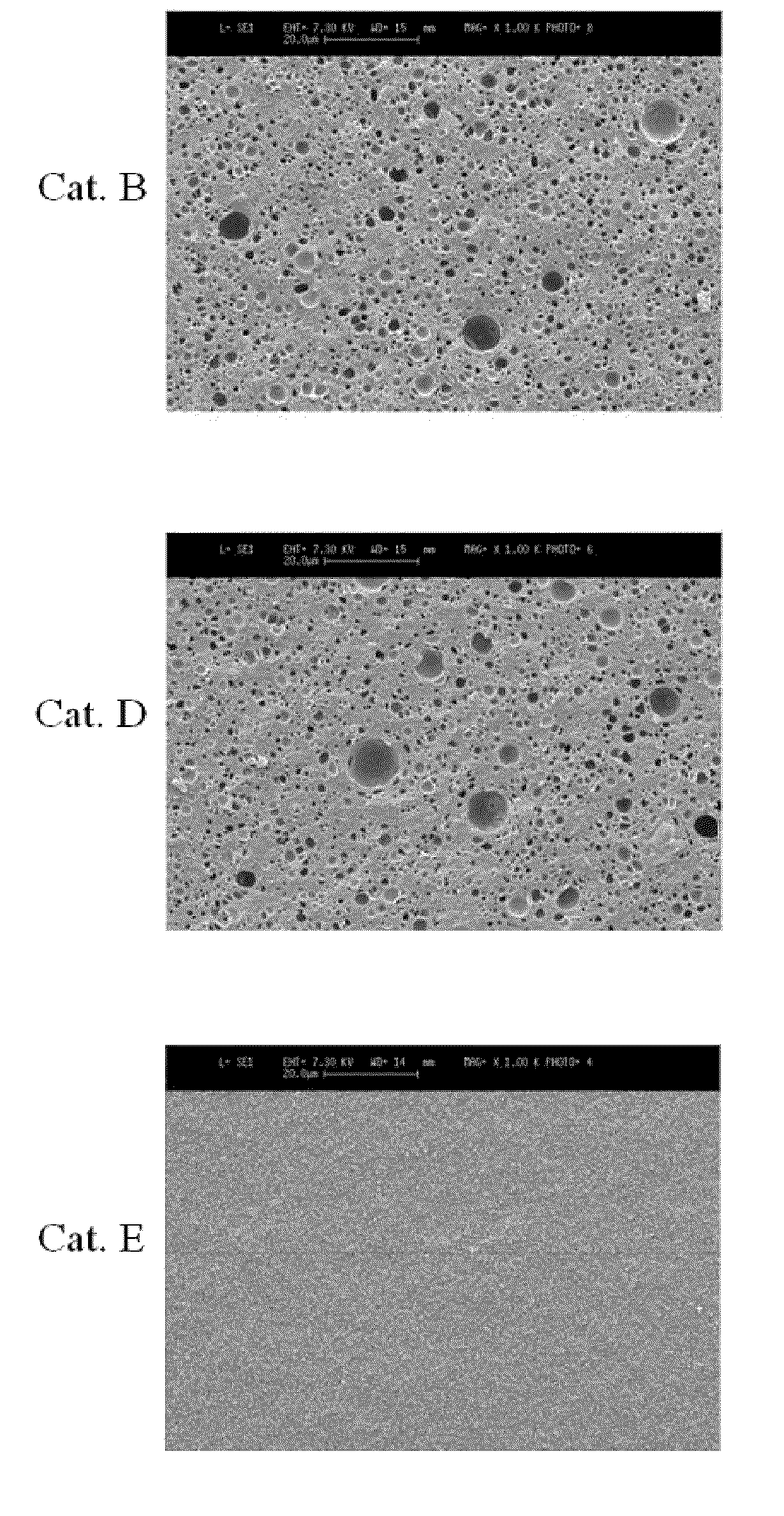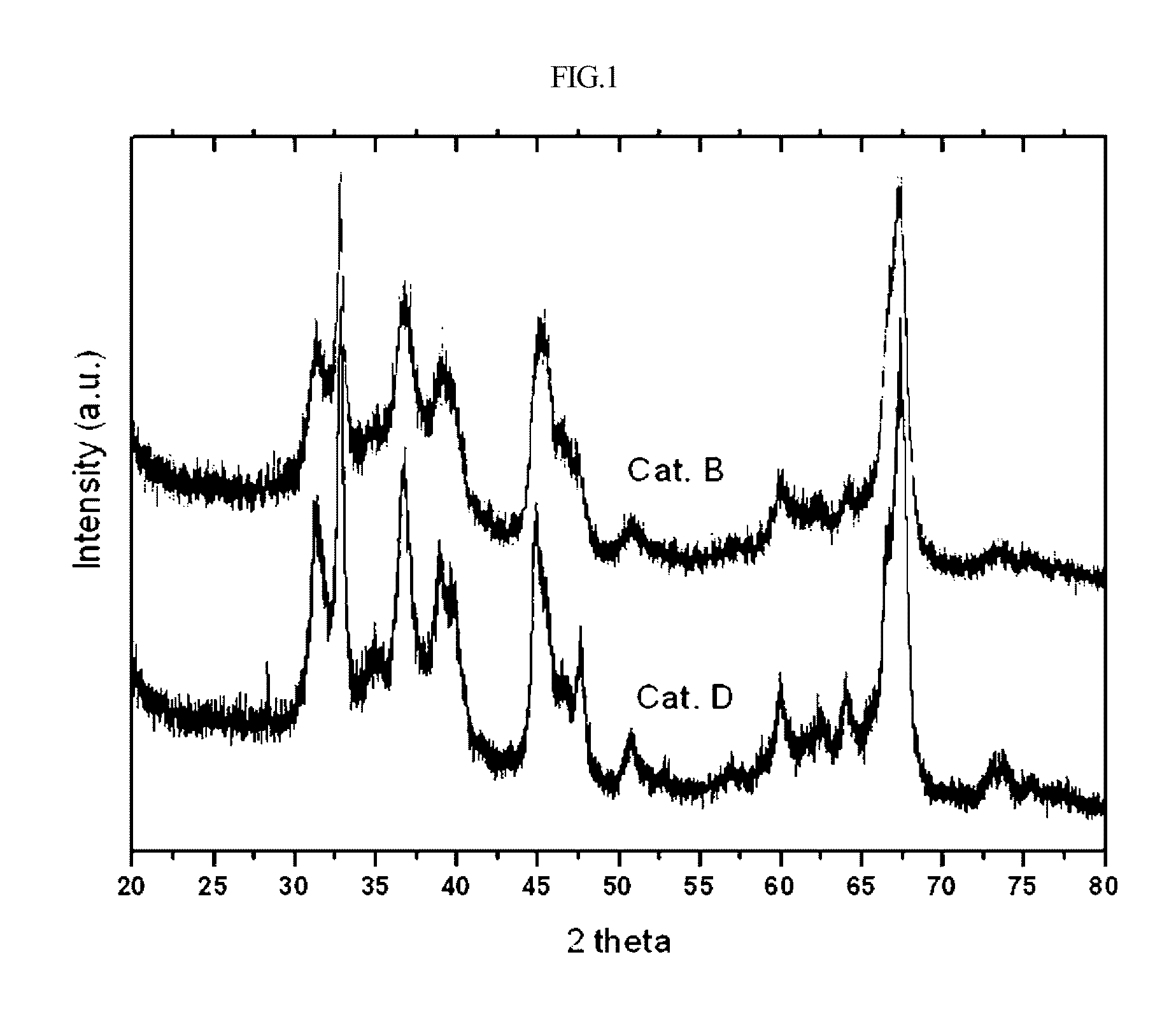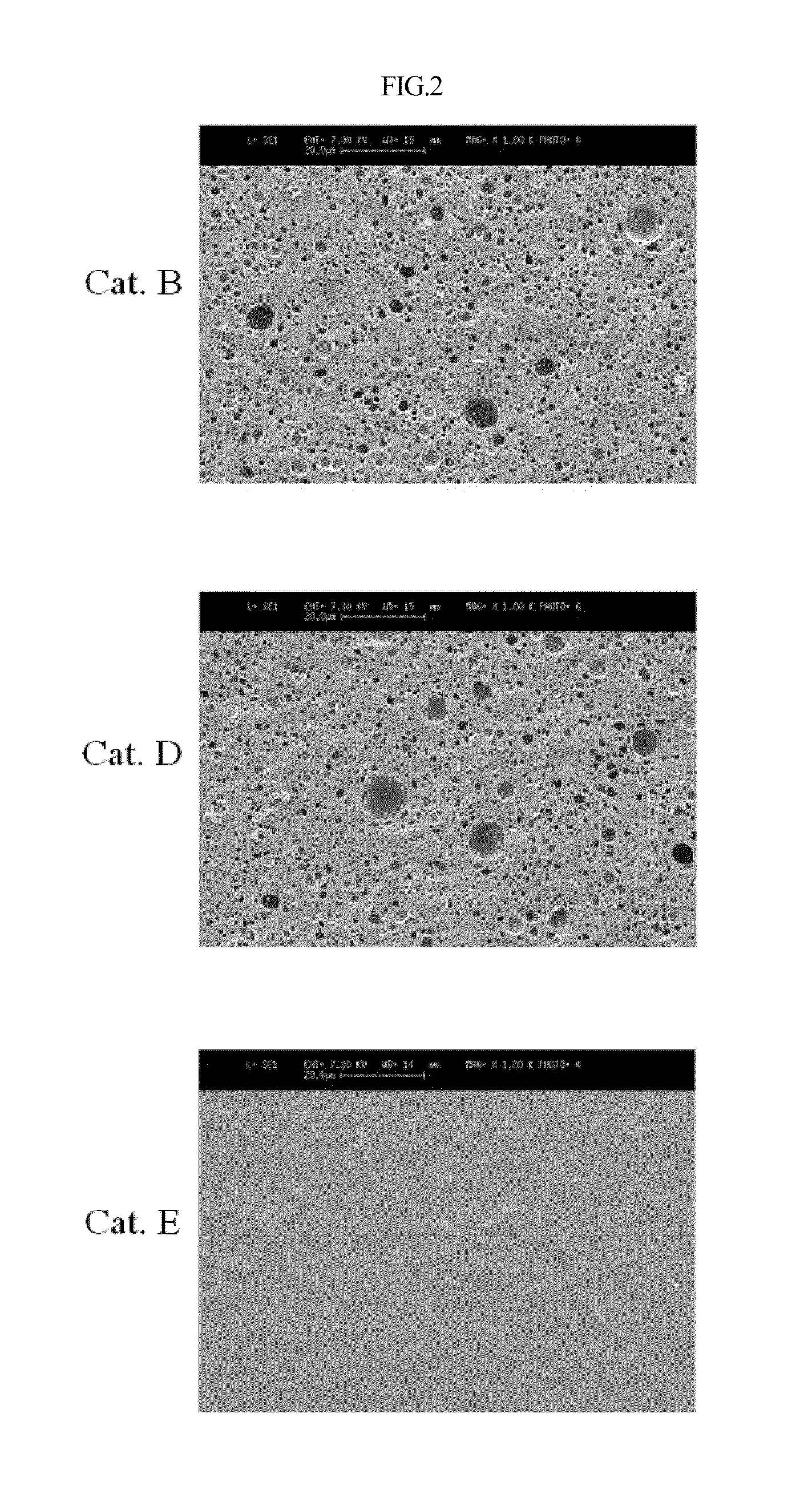Dehydrogenation catalyst
a technology of dehydrogenation catalyst and catalyst, which is applied in the direction of physical/chemical process catalyst, metal/metal-oxide/metal-hydroxide catalyst, bulk chemical production, etc., can solve the problems of accelerating the deactivation of catalyst, reducing the total reaction conversion, and reducing the effect of active material in the pores
- Summary
- Abstract
- Description
- Claims
- Application Information
AI Technical Summary
Benefits of technology
Problems solved by technology
Method used
Image
Examples
example 1
Preparation of Dehydrogenation Catalyst
[0029]Alumina having spherical gamma-crystallinity prepared according to U.S. Pat. No. 4,542,113 was purchased from Sasol, Germany, and was thermally deformed using a tube electric furnace (available from Korea Furnace) under a stream of air of 300 mL / min at 1050° C. for 6 hours and then used as a carrier for a catalyst. The crystallinity of alumina was measured using X-ray analysis. The results are shown in FIG. 1, with a theta crystallinity of 90% or more.
[0030]Using the thermally deformed alumina carrier, a catalyst was prepared via room temperature / high temperature adsorption. Specifically, 0.0717 g of tin chloride (SnCl2, >99%, Sigma), 0.5714 g of hydrochloric acid (HCl, >35%, JUNSEI), and 0.0714 g of nitric acid (HNO3, 70%, Yakuri) were dissolved in 24 g of distilled water, and then supported on 20 g of the thermally deformed alumina. The supported solution was dried using a rotary evaporator (HAHNSHIN Scientific Co.), stirred at room tem...
example 2
Preparation of Dehydrogenation Catalyst
[0032]Alumina before thermal deformation used for preparing the catalyst B of Example 1 was thermally deformed at 1100° C. for 6 hours under stream of air of 300 mL / min using a tube electric furnace and then used as a carrier for the catalyst. The crystallinity of alumina was measured using X-ray analysis. The results are shown in FIG. 1, with a theta crystallinity of 90% or more.
[0033]A catalyst D was obtained using the thermally deformed alumina carrier in the same manner as in Example 1.
PUM
| Property | Measurement | Unit |
|---|---|---|
| Force | aaaaa | aaaaa |
| Length | aaaaa | aaaaa |
| Fraction | aaaaa | aaaaa |
Abstract
Description
Claims
Application Information
 Login to View More
Login to View More - R&D
- Intellectual Property
- Life Sciences
- Materials
- Tech Scout
- Unparalleled Data Quality
- Higher Quality Content
- 60% Fewer Hallucinations
Browse by: Latest US Patents, China's latest patents, Technical Efficacy Thesaurus, Application Domain, Technology Topic, Popular Technical Reports.
© 2025 PatSnap. All rights reserved.Legal|Privacy policy|Modern Slavery Act Transparency Statement|Sitemap|About US| Contact US: help@patsnap.com



